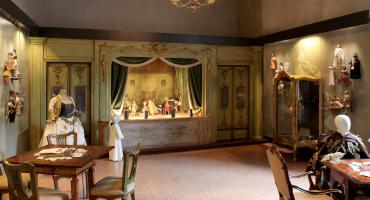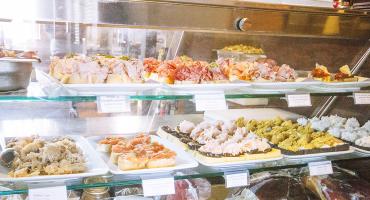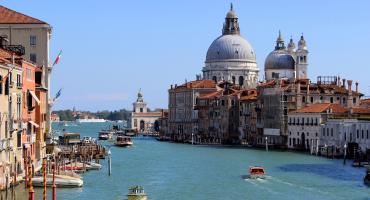Saint Mark’s square, riva degli Schiavoni and the other squares in Venice became immense stages in which different types of entertainments where organized. Everywhere in the city during Carnival there were parties and shows attended both by Venetians and tourists.
In coffee shops, public theatres, private houses, academies, everywhere shows and theatrical performances were held, as well as ballets and party dances in palaces and in aristocratic abodes...
All the streets were full of colorful parades and people rushed to see the makeshift shows of dancers, jugglers and acrobats.
On the streets there were kiosks selling sweets, fruits, chestnuts and frittelle (pankakes), the typical Carnival sweets.
 From the second half of the 15th century and at the end of the 16th century, the organization of the Carnival parties (feste carnascialesche) started to be regulated and made official by the "Compagnie della Calza", associations of young patrician wearing colorful socks to distinguish themselves according to the district they belonged to.
From the second half of the 15th century and at the end of the 16th century, the organization of the Carnival parties (feste carnascialesche) started to be regulated and made official by the "Compagnie della Calza", associations of young patrician wearing colorful socks to distinguish themselves according to the district they belonged to.
The most important days of the Carnival were, as now, Thursday and Mardi Gras.
In those days, the population attended to the official Carnival parties, that were held in public squares.
At the end of the 18th century, after the fall of Venetian Republic, when the city was given by the French to the Austrian, the official Carnival disappeared slowly and it reappeared again now a days.
Starting from the ’80, Venice Carnival was given its former glory.
Today, masks coming from all over the world crowd every year Venetian squares and above all in Saint Mark’s Square, traditional costumes are mixed with bizarre and creative ones; balls, parties, concerts and theatrical performances are held.



